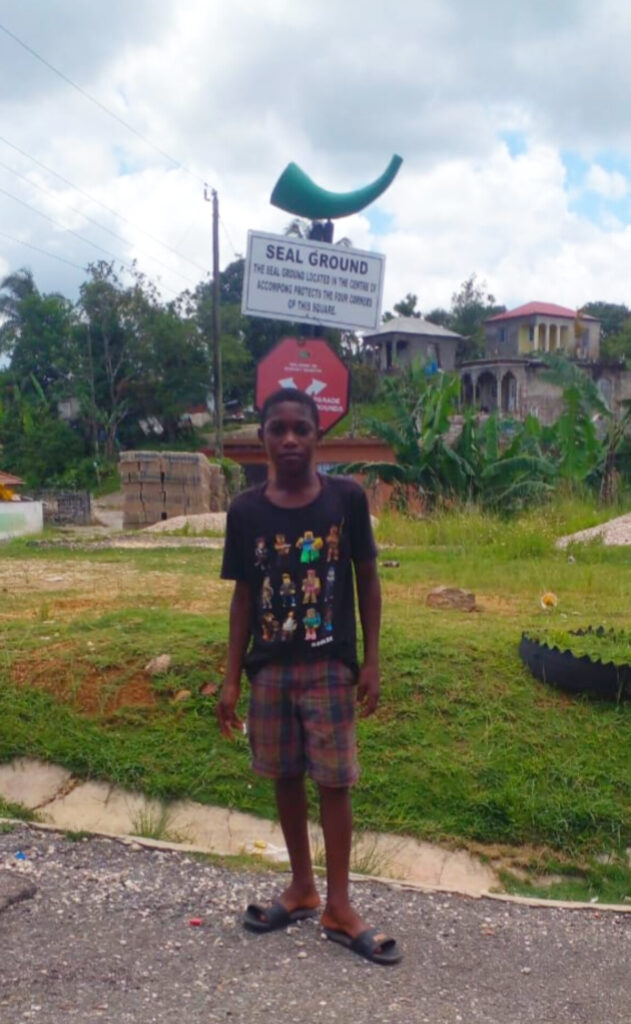Charity foundation


Children Development Foundation
A children’s charity foundation is crucial for indigenous Maroon communities as it can provide essential resources, education, and healthcare, fostering opportunities that are often limited in these areas. By supporting children’s well-being and education, such a foundation helps preserve Maroon cultural heritage while empowering young generations to thrive and contribute positively to their communities. Additionally, it can address specific challenges these communities face, such as limited access to quality education and healthcare, helping to break cycles of poverty and improve the overall quality of life for future generations.
Future Projects
Water project Foundation
The Accompong Maroon community would greatly benefit from a water project as they currently lack access to running water, which poses significant challenges for daily life, health, and sanitation. A dedicated water supply would provide reliable access to clean water, improving overall hygiene, reducing waterborne illnesses, and supporting agriculture and local economic activities. Additionally, it would enhance quality of life and support the community’s sustainability, preserving their cultural heritage while promoting modern health standards.
Water truck Project
A water truck project would be highly beneficial for Accompong Town Maroons, as the village currently lacks a consistent water supply. Bringing in a water truck would provide reliable access to clean water, essential for daily needs like drinking, cooking, and sanitation. This project would improve health, reduce time spent on water collection, and support the community’s resilience, ultimately enhancing the quality of life for the Maroons, until a full water company is instituted.
Ambulance Service Project
An ambulance service in Accompong would be incredibly valuable and beneficial for its citizens, addressing several key health and safety needs. It would provide a quick emergency Response, an ambulance service would reduce the time it takes to get medical help, which is crucial in emergencies. For life-threatening conditions like heart attacks, strokes, or serious injuries, immediate medical care can significantly improve survival chances and outcomes.
Access to Trained Professionals: Ambulances are staffed by trained paramedics and EMTs who can administer life-saving interventions on the way to a hospital. This level of immediate care can prevent complications, stabilize patients, and provide a sense of security for residents.
Transport to Medical Facilities: In remote areas or smaller communities, reaching a hospital can take time. An ambulance service ensures safe, rapid transport, improving access to hospitals or specialized care centers for those who might otherwise struggle to get there on their own.
Support for Vulnerable Populations: Elderly residents, children, and individuals with chronic health conditions especially benefit from having a reliable service available in case of urgent health issues. This service can make the community more supportive and inclusive with community Preparedness and Safety: Having an ambulance service enhances the overall safety and health preparedness of Accompong. It allows for better planning and response to any natural disasters, accidents, or community-wide health emergencies.
Overall, an ambulance service would foster a safer, more resilient community, helping people feel secure that emergency help is accessible when needed.
Clinic / Hospital Project
A clinic or hospital would be incredibly beneficial to the Accompong Maroon community because currently, they lack accessible healthcare facilities. This means community members must travel long distances, often over difficult terrain, to reach the nearest medical services. Having a local clinic or hospital would provide:
1. Access to Essential Healthcare: Immediate access to basic medical services, such as general check-ups, vaccinations, and treatments for minor ailments and injuries. This would greatly reduce the risk of minor health issues becoming severe.
2. Emergency Services: Quick response for emergencies, potentially saving lives. For life-threatening situations, such as heart attacks or severe injuries, proximity to emergency care could make the difference between life and death.
3. Preventive and Regular Health Care: A local facility could provide preventive care and health education, helping manage chronic conditions like hypertension or diabetes, which can be difficult to control without regular monitoring.
4. Improved Community Health: With regular access to healthcare, the overall health of the community could improve, leading to better quality of life and increased productivity.
5. Support for Elders and Vulnerable Populations: Elders, children, and other vulnerable individuals would receive the care they need without the strain of travel, ensuring they can maintain their health more easily.
6. Healthcare Jobs and Training Opportunities: A clinic or hospital would create local employment opportunities and may allow for training programs, empowering community members to gain skills and contribute to healthcare delivery.
In short, a healthcare facility would foster a healthier, more self-sufficient community, preserving the well-being and resilience of the Accompong Maroons.
School bus project
A school bus would be crucial for the children in Accompong, without a proper transportation system, their access to education is heavily restricted. Accompong is a rural Maroon community, often isolated and with limited infrastructure. The lack of reliable transportation means that many children must walk long distances or rely on inconsistent, costly options to get to schools outside the village.
Having a school bus would ensure that children can attend school regularly, safely, and on time, which would significantly improve their educational experience and outcomes. It would also relieve financial and logistical burdens on families who might otherwise struggle to secure transport. Additionally, regular access to education through reliable transportation can empower the children of Accompong with greater opportunities for learning, personal development, and future career prospects, which would benefit both them and the broader community.
Food Bank Foundation
A food bank would play a crucial role in the Village of the Accompong Maroons by supporting food security, health, and community resilience. The Accompong Maroons have a rich cultural heritage and a strong sense of community, but like many rural or isolated areas, they may face challenges related to economic opportunities and access to affordable, nutritious food.
1. Food Security: A food bank would help ensure that all residents have access to basic food supplies, especially during times when resources are scarce, such as in case of natural disasters or economic downturns.
2. Nutritional Support: Food banks often provide healthier food options, including fresh produce and essential staples. This is important for supporting the health and well-being of all community members, particularly children, the elderly, and those with specific health needs.
3. Cultural and Community Support: Food banks in Accompong could also be tailored to honor local traditions and foods, providing culturally relevant options that strengthen the community’s connection to its heritage. This could include support for local farmers or partnerships to source traditional ingredients.
4. Economic Relief: By reducing the financial burden of purchasing food, a food bank allows families to allocate their resources toward other essential needs, such as education, healthcare, and housing, which can improve overall quality of life.
5. Community Resilience and Solidarity: A food bank would serve as a hub for the community, strengthening the bonds among residents. It could be a place where people come together to volunteer, support one another, and share in the responsibility of looking after their community, fostering resilience and a sense of solidarity.